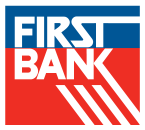The Commercial Real Estate (CRE) market has certainly faced challenges since the Covid pandemic. At the onset, supply chain disruptions contributed to significant spikes in material costs and delayed construction timelines. For several asset classes, worker shortages and higher labor costs squeezed already tight operating margins. Lately, we’ve seen increased operating expenses and escalating insurance costs impacting property level cash flow. While there has been some reprieve, albeit not as quickly as many have anticipated, elevated interest rates remain a challenge for developers and owners have seen negatively impacted property valuations. Given all the challenges it has faced, the CRE market has remained surprisingly resilient. When assets are appropriately leveraged, landlords and operators can adjust rents to offset higher development and operating costs. In addition, consumption has remained strong despite inflationary pressures on American households.
The newest challenge to present itself, and the hot topic for discussion over the last several weeks, are trade tariffs enacted by the current administration. Regardless of what side of the political fence you sit on, any industry, business, or consumer that relies on goods or materials sourced outside the United States (U.S.) will be affected. As tariffs pertain to CRE, the most immediate impact is expected to be escalating construction costs and the potential for new supply chain disruptions contributing to overall uncertainty in the near term.
Per the National Association of Home Builders (NAHB), the cost of building materials has already risen by 34% since December 2020. At time of writing, reciprocal tariffs imposed in early April 2025 were suspended until July 9, 2025, and replaced with a baseline 10% tariff on nearly all countries and products. Exceptions remain for China (currently reduced from 145% to 30%), Canada, and Mexico (25%); however, United States-Mexico-Canada Agreement (USMCA)-compliant goods are not subject to newly imposed tariffs. Per the US Census Bureau, as of March 2024, imports from the three mentioned nations aggregated to 34.8% of total U.S. imports for the month.
According to Jones Lang LaSalle, approximately one-third of construction-related goods are imported. Key construction components, such as steel, aluminum, lumber, and gypsum, are often imported from China, Canada, and Mexico and have initially increased CRE project expenses by an estimated 3% to 5%, per CBRE. Steel is particularly vulnerable to tariff actions. The annual volume of steel imported into the U.S. is roughly 25-30M metric tons. In 2024, the 26.2M metric tons of imported steel was valued at $31.6 billion. The U.S. imports on average 20%–25% of its steel from Canada. In 2024, that volume amounted to 5.95M metric tons and $7.1 billion. The subsequent 90-day tariff pause announced on April 9 has provided temporary relief, but sustained uncertainty remains, complicating planning, budgeting, and financing for new projects.
In the multifamily sector, where material requirements are high, supply chain disruptions have compounded these challenges. Tariffs have delayed material deliveries, especially from major suppliers in China and Canada. Several sources report ocean freight container bookings declined nearly 50% during the first week of April following Trump's initial tariff announcement. With the recently announced, temporary bilateral tariff reduction between the U.S. and China, we would expect to see more normalized trade in the near term.
In speaking with a large general contractor on the tariff issue, their strategy is to collaborate with clients to ensure there is reasonable contingency included in project budgets to cover any potential price increases. Bids and contracts will contain price qualifiers or material escalation clauses. This is not a new concept given the volatility of material costs experienced during the Covid pandemic. In short, general contractors are not going to bear the risk of cost increases, and open dialogue between contractors and owners during the bid phase to address the economic and price uncertainty remains the best practice for all concerned.
Beyond construction and development, the ripple effects of tariffs are also likely to be felt amongst existing properties. Retail and hospitality have been strong performers post Covid but could be facing strong headwinds with tariffs. Consumer spending was stronger than expected in March as demand remained high despite declining consumer confidence. Perhaps this was the consumer getting ahead of higher anticipated costs from looming tariffs, but there is sentiment that the consumer is taxed. Credit card debt is at an all-time high. The cost of housing continues to increase, student debt remains an ongoing burden for many, and persistent inflation continues to take its toll. With higher costs for essentials from prolonged tariffs, consumers could be forced to cut discretionary spending which will likely be felt by retailers and the hospitality sector.
Over the past five years, industrial real estate has been the golden child of CRE, buoyed by e-commerce and last-mile logistics. However, President Trump’s new round of tariffs appears to be slowing leasing activity in the industrial real estate market. Coastal warehouses that are essential to U.S. importers are expected to be among the hardest hit, but a reduced flow of goods could impact the broader market. On the company’s Q1 earnings call, Prologis®, an industrial giant, stated they were trimming more than $1B from its 2025 development pipeline as global tariff uncertainty slows tenant decision-making and leasing momentum.
The hardest hit asset class from the pandemic, office, was beginning to show signs of life with increased positive absorption in conjunction with return-to-office mandates. However, uncertainty about the overall economy is likely to stifle further positive momentum in 2025 and could reverse any recent gains the office market has experienced.
Compounding the issue of higher construction costs could be a reversal of the market’s expectation of lower interest rates. At its last two meetings, the Federal Reserve left interest rates on pause, halting a stretch of three rate cuts in late 2024. Expectations called for the potential for additional cuts in the latter half of 2025, and that still seems to be the consensus. However, it’s generally expected that tariffs will increase the price of goods for consumers contributing to inflationary pressure, albeit the belief is that it will be transient pressure. Therefore, Fed policymakers will now have to wait for additional Consumer Price Index (CPI) data in the coming months before deciding if further rate cuts are warranted. That said, tariffs could also drive a sharp slowdown in economic activity and employment, which might give the Fed a reason to cut rates even if inflation remains above target levels. According to Reuters®, seven top Wall Street banks raised their chances of a recession in the U.S., specifically because of the recently enacted tariffs; however, we are now seeing revisions on economic outlook with the recently announced, temporary reductions and ongoing trade negotiations with China and other countries.
Despite the challenges discussed, tariffs could potentially yield long-term benefits to CRE. If the true goal of the administration’s tariffs is to incentivize the reshoring of manufacturing, tariffs could boost demand for manufacturing and industrial assets, but this is a long-term goal that will require significant capital investment and years to materialize extending beyond the current administration’s tenure. Other potential benefits from reduced construction activity and delayed project starts are rent growth and higher occupancy amongst existing assets contributing to higher Net Operating Income (NOI) and valuations, especially in multifamily markets and assuming no recessionary pressures.
In researching and discussing this topic with people in different roles across the CRE market, the word that continues to be mentioned time and time again is uncertainty. Business owners are uncertain how material prices and supply chains will impact their operating results; CRE investors are uncertain how tenants will fare should tariffs result in a recession; developers are uncertain how tariffs will affect project costs; and tenants are uncertain whether to expand. What’s more, banks, policy makers, and borrowers are uncertain which way interest rates may head over the remainder of 2025. No one seems to have a good sense of how tariffs are going to play out as policy can change and has already proven to change on a weekly basis. Given the uncertainty, planning is proving to be difficult. Right now, the takeaway is that the high level of uncertainty is expected to affect investment, and that will certainly influence growth and the overall economic climate.
If you’re contemplating a commercial real estate loan and have questions regarding any aspect of the process, please reach out to First Bank’s team of local, experienced lenders. We’re here to help guide you while purchasing or refinancing commercial real estate.

Jeffrey W. Bennett, Senior Vice President
Midwest Commercial Real Estate Lending Division
(314) 692-6368
[email protected]
Jeffrey W. Bennett, Senior Vice President, Midwest Commercial Real Estate Lending Division, is a member of the Midwest Commercial Real Estate and Senior Housing Division specializing in transactions related to land acquisition/development, residential and commercial construction, office, retail, hospitality, multi-family, industrial plus healthcare and senior housing. He has significant experience with transactions involving public financing incentives including State and Federal Historic Tax Credits, Political Subdivisions, Federal New Market Tax Credits, and Low Income Housing Tax Credits.


